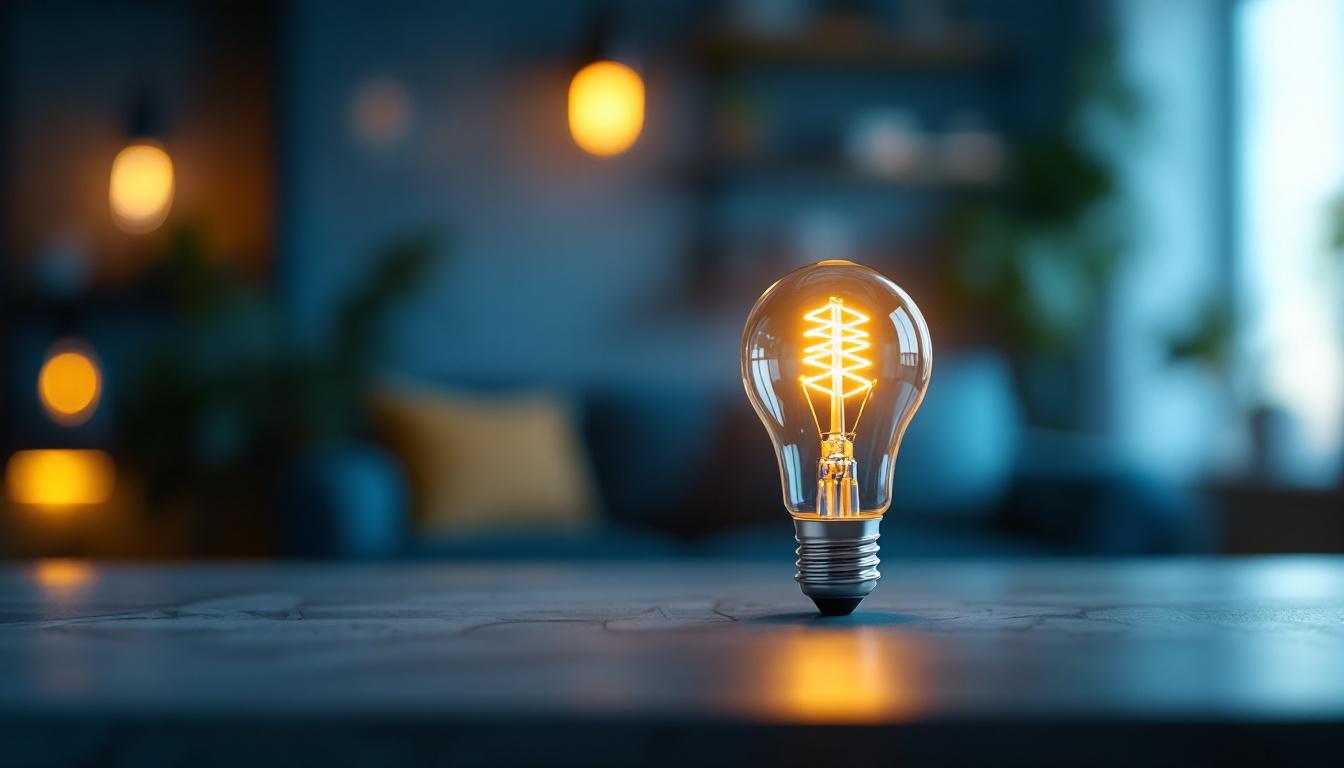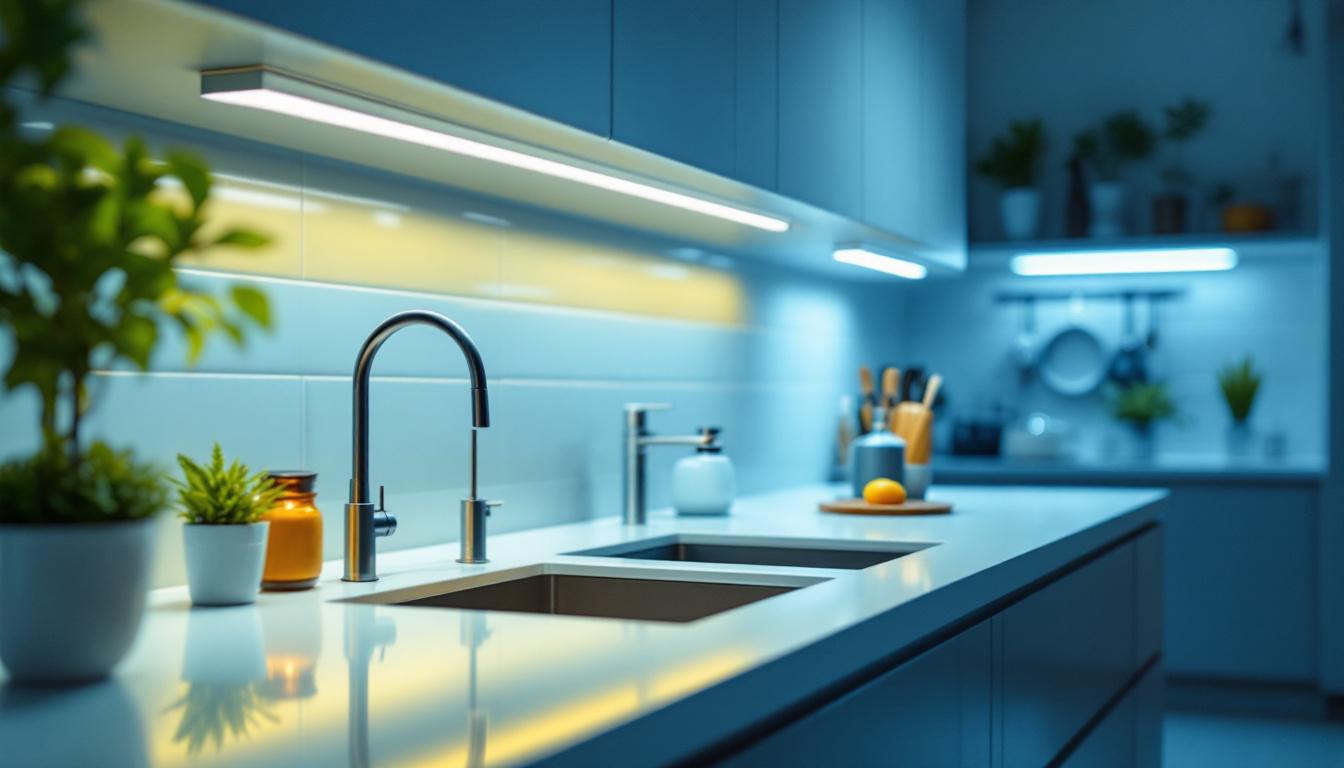
The invention of the light bulb marked a transformative moment in human history. This seemingly simple device has had a profound impact on our daily lives, revolutionizing how we illuminate our spaces and interact with the world around us. For lighting contractors, understanding the evolution of the light bulb and its role in modern lighting solutions is crucial for providing clients with the best options available.
From the earliest forms of artificial light to today’s advanced lighting technologies, the journey of the light bulb is a fascinating tale of innovation and progress. The initial attempts at creating electric light were met with numerous challenges, but each iteration brought us closer to the efficient and versatile lighting solutions we have today.
The quest for electric light began with various inventors exploring different materials and designs. Early experiments included arc lamps and incandescent bulbs using carbon filaments. While these inventions laid the groundwork for modern lighting, they often had limitations such as short lifespan and high energy consumption.
As these early technologies evolved, inventors began to refine their designs. The introduction of tungsten filaments significantly improved the efficiency and longevity of incandescent bulbs, making them more viable for widespread use. This marked a pivotal moment in the evolution of lighting, as it allowed for greater accessibility and convenience. The incandescent bulb became a staple in households and businesses alike, illuminating everything from humble homes to grand theaters, and it sparked a cultural shift as people began to embrace the possibilities of artificial light in their daily lives.
With the rise of fluorescent lighting, a new era of energy efficiency began. Fluorescent bulbs consume less energy and have a longer lifespan compared to traditional incandescent bulbs. This shift not only transformed commercial lighting but also encouraged the development of more sophisticated lighting designs. The soft, diffused glow of fluorescent lights became synonymous with modern office spaces, schools, and retail environments, enhancing productivity and creating inviting atmospheres.
In recent years, LED technology has taken center stage. LEDs offer unparalleled energy efficiency, longevity, and versatility, making them the preferred choice for modern lighting solutions. Their ability to produce a wide range of colors and intensities allows lighting contractors to create tailored solutions that meet the specific needs of their clients. Additionally, the compact size of LEDs has led to innovative applications, from architectural lighting that highlights building features to smart lighting systems that can be controlled remotely, further integrating technology into our everyday lives. As we continue to explore the potential of light, the future promises even more advancements, including organic LEDs (OLEDs) and smart lighting solutions that adapt to our environments and preferences, paving the way for a more sustainable and customizable approach to illumination.
Today, the landscape of lighting solutions is rich and varied, offering a plethora of options for contractors and clients alike. From residential spaces to commercial environments, the right lighting can enhance aesthetics, functionality, and energy efficiency.
The integration of smart technology into lighting systems has revolutionized how we interact with light. Smart bulbs and fixtures allow users to control their lighting through mobile apps or voice commands, offering convenience and customization. This technology not only enhances user experience but also contributes to energy savings by allowing users to schedule lighting based on their routines.
For lighting contractors, understanding the intricacies of smart lighting systems is essential. This includes knowledge of compatibility with existing infrastructure, installation processes, and the various features that can enhance the user experience. By offering smart lighting solutions, contractors can position themselves as forward-thinking professionals in a rapidly evolving industry. Moreover, the ability to integrate smart lighting with other home automation systems, such as security and climate control, creates a cohesive environment that caters to the modern homeowner’s desire for convenience and efficiency.
As environmental concerns continue to rise, energy efficiency and sustainability have become paramount in the lighting industry. Modern lighting solutions prioritize energy-saving technologies that reduce consumption and lower carbon footprints. This shift is not only beneficial for the environment but also appeals to clients looking to reduce operational costs.
Lighting contractors play a crucial role in this transition by recommending energy-efficient products and educating clients on the long-term benefits of sustainable lighting solutions. By staying informed about the latest advancements in energy-efficient technologies, contractors can provide valuable insights that help clients make informed decisions. Additionally, the use of LED lighting has surged, as these fixtures consume significantly less energy than traditional incandescent bulbs and boast a longer lifespan, further contributing to sustainability efforts. The shift towards renewable energy sources, such as solar-powered lighting options, also presents exciting opportunities for contractors to offer innovative solutions that align with eco-friendly practices.
Beyond functionality and efficiency, the design of lighting solutions is a critical factor that can significantly impact the overall aesthetic of a space. The right lighting can enhance architectural features, create ambiance, and influence mood. It serves as a silent yet powerful tool that can transform a mundane area into a captivating environment, making it essential for designers and architects to consider lighting as a fundamental aspect of their projects.
Architectural lighting focuses on highlighting the design elements of a space. This can include accent lighting, wall washes, and task lighting that draw attention to specific features or areas. For lighting contractors, understanding how to integrate architectural lighting into a project can elevate the overall design and create a cohesive look. The strategic placement of fixtures can create visual interest, guiding the viewer’s eye and enhancing the perception of space. For instance, using uplighting to illuminate a textured wall can add depth and dimension, while downlighting can create a warm, inviting atmosphere.
Collaboration with architects and interior designers is often essential in achieving the desired outcome. By working together, lighting contractors can ensure that the lighting complements the overall vision of the space while meeting functional requirements. This collaboration can also lead to innovative solutions that push the boundaries of traditional design. For example, integrating smart lighting controls can allow for dynamic changes in brightness and color, adapting to different uses of the space throughout the day. Such advancements not only enhance the aesthetic appeal but also improve the functionality of the environment.
Human-centric lighting is an emerging trend that considers the impact of light on human health and well-being. This approach focuses on mimicking natural light patterns to enhance mood, productivity, and overall comfort. For lighting contractors, incorporating human-centric lighting solutions can set them apart in a competitive market. By prioritizing the needs of the occupants, contractors can create spaces that are not only visually appealing but also supportive of mental and physical health.
By understanding the principles of human-centric lighting, contractors can design solutions that not only illuminate spaces but also promote well-being. This may involve using tunable white LEDs that adjust color temperature throughout the day or implementing circadian lighting systems that align with natural light cycles. Furthermore, research has shown that exposure to natural light can significantly improve focus and reduce fatigue, making it particularly beneficial in work environments. As awareness of these benefits grows, the demand for human-centric lighting solutions is likely to increase, presenting a unique opportunity for contractors to lead the way in this innovative approach to lighting design. Additionally, incorporating elements like daylight harvesting can further enhance energy efficiency while creating a more pleasant atmosphere for occupants, making it a win-win for both aesthetics and sustainability.
While the advancements in lighting technology have been remarkable, the industry also faces several challenges. Lighting contractors must navigate these obstacles to provide effective solutions for their clients.
As energy efficiency standards and regulations continue to evolve, lighting contractors must stay informed about compliance requirements. This includes understanding local building codes, energy efficiency standards, and safety regulations. Failure to comply can result in costly penalties and project delays.
By maintaining a thorough understanding of these regulations, contractors can ensure that their projects meet all necessary standards, providing peace of mind for both themselves and their clients.
The global supply chain has faced significant disruptions in recent years, impacting the availability of lighting products. Contractors may encounter delays in sourcing materials or face increased costs due to shortages. Navigating these challenges requires adaptability and proactive communication with clients.
Establishing strong relationships with suppliers and staying informed about market trends can help contractors mitigate the impact of supply chain issues. By planning ahead and maintaining flexibility, contractors can continue to deliver high-quality lighting solutions to their clients.
The future of lighting solutions is bright, with ongoing advancements in technology and design. As the industry continues to evolve, lighting contractors must remain adaptable and open to new ideas.
Emerging technologies, such as organic light-emitting diodes (OLEDs) and advanced sensor systems, are set to change the landscape of lighting even further. OLEDs offer unique design possibilities with their thin, flexible form factors, while advanced sensors can enhance energy efficiency and user experience.
Lighting contractors should stay abreast of these developments to offer innovative solutions that meet the evolving needs of their clients. By embracing new technologies, contractors can position themselves as leaders in the industry.
The integration of lighting with other building systems, such as HVAC and security, is becoming increasingly important. This holistic approach allows for greater energy efficiency and improved user experience. Lighting contractors will need to collaborate with other trades to create integrated solutions that maximize the benefits of each system.
By understanding how lighting interacts with other systems, contractors can provide comprehensive solutions that enhance the functionality and efficiency of a space. This collaborative approach can lead to more successful projects and satisfied clients.
The light bulb, a simple yet revolutionary invention, has paved the way for modern lighting solutions that are more efficient, versatile, and aesthetically pleasing. For lighting contractors, understanding the evolution of the light bulb and its implications for contemporary lighting design is essential for staying competitive in the industry. By embracing new technologies, prioritizing energy efficiency, and focusing on design, contractors can provide their clients with innovative lighting solutions that enhance their spaces and improve their quality of life.
As the lighting industry continues to evolve, contractors must remain informed and adaptable. By doing so, they can navigate challenges, seize opportunities, and contribute to a brighter, more sustainable future in lighting.
As you embrace the future of lighting solutions, choose LumenWholesale for all your lighting needs. We provide lighting contractors with an extensive selection of spec-grade lighting products that embody efficiency, innovation, and design excellence. Our commitment to quality and affordability ensures that you can light up your projects without compromise. With unbeatable wholesale prices, free shipping on bulk orders, and no middleman markups, you’re guaranteed the best value in the industry. Elevate your lighting game and explore our collection at LumenWholesale today.

Discover the essential insights lighting contractors need to know about LED undercounter lights.

Discover essential tips to sidestep expensive errors in solar lighting projects.

Discover the pitfalls lighting contractors often face when dealing with wholesale LED lights.

Discover the essential checklist for lighting contractors using Loves Power Inverter to ensure seamless installations and optimal performance.